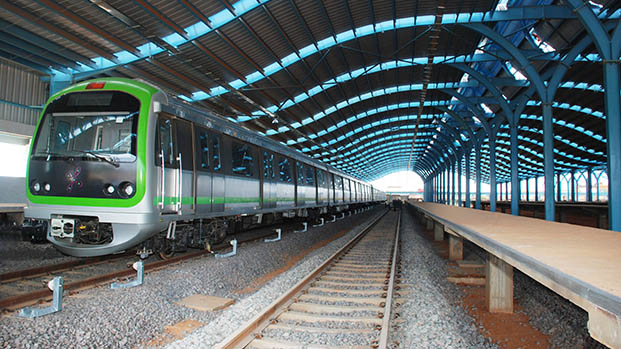


The Bangalore Metro or Namma Metro is a rapid transit system in the city of Bangalore. Upon inauguration in 2011, this became the first metro system in South India. With the idea for a mass rapid transit project floated as far back as in 1977, this idea took shape over many decades with various state governments mulling over it, studying it, and fine tuning the planning of the project. Bangalore Mass Rapid Transit Ltd (BMRTL) was created in 1994 to look into private/public partnership for a mass rapid transit project. Several studies took place and in 2003, the Delhi Metro Rail Corporation, the developer of the successful Delhi Metro, was commissioned by the Government of Karnataka. The findings of the Delhi Metro Rail Corporation were accepted by the government and as a result, BMRTL was replaced by Bangalore Metro Rail Corporation Ltd (BMRCL). The Bangalore Metro has a mix of stations – underground, at grade, and elevated. It has two lines, the purple line and the green line. The purple line is aligned east to west of the city. This connects Baiyyapanahalli in East Bangalore to Kengeri in Southwest Bangalore. This line runs a stretch of 25.7 kilometres and has a total of 22 stations. The green line of Namma Metro is aligned north to south of the city. This connects Nagasandra in North-West Bangalore to Silk Institute in South-West Bangalore. This line runs a stretch of 30.4 kilometres and has a total of 30 stations. To say the metro has changed the face of travel in the city is an understatement. The metro has aided in higher connectivity and accessibility to different areas of the city. Bangaloreans are using the metro more than ever, with a daily ridership in January 2020 of about 5,18,000 passengers. The metro is smoother, simpler, and travel across the city is free of traffic jams and snarls. The metro has enhanced connectivity and is only set to ease this further as time goes by.
| Enquiry Now |